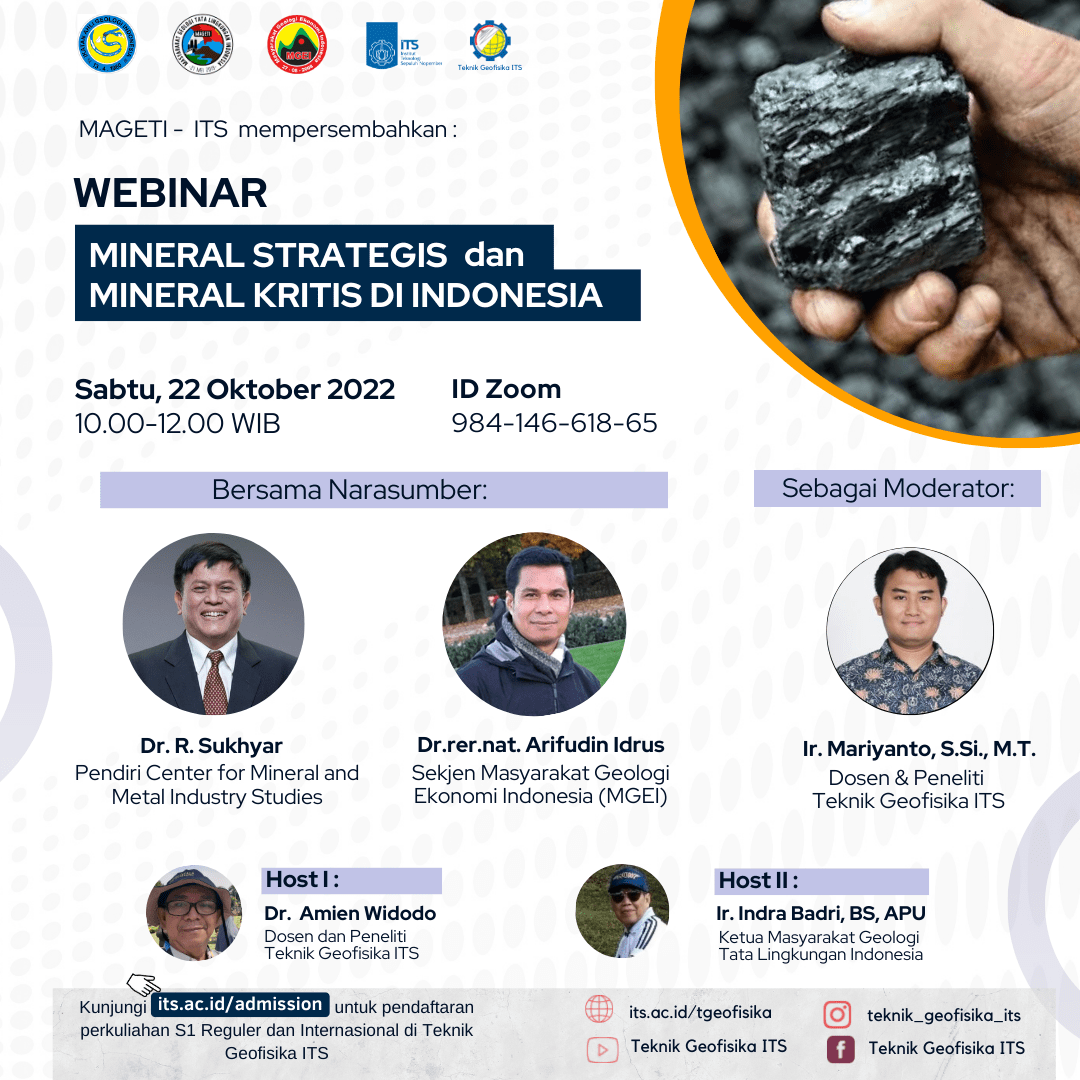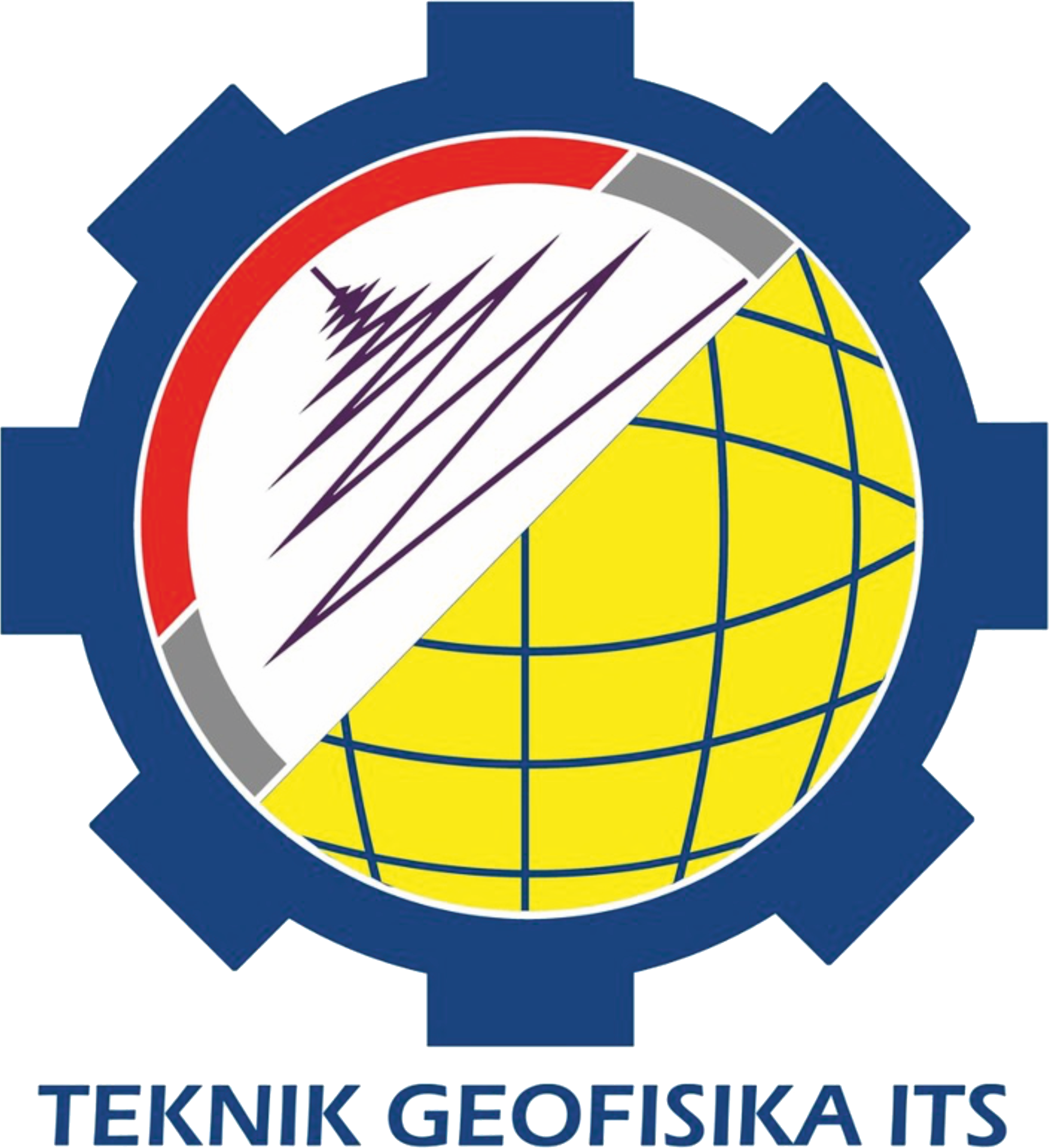Webinar “MINERAL STRATEGIS DAN MINERAL KRITIS DI INDONESIA”
Information
Critical raw materials are a group of future minerals that can be used for technological innovations based on clean and renewable energy. This mineral is said to be critical because its availability is increasingly limited. There are other factors such as high demand, geopolitical competition, trade policy issues, and the function of critical minerals that cannot be replaced by other minerals.
Some countries such as the US, Japan, South Korea, and the European Union classify
critical minerals as follows: rare earth elements (REE), gallium (Ga), indium (In), tungsten (W), platinum (Pt), palladium (Pd), cobalt (Co), niobium (Nb), magnesium (Mg), molybdenum (Mo), antimony (Sb), lithium (Li), vanadium (V), nickel (Ni), tantalum (Ta), tellurium (Te), chromium (Cr) and manganese (Mn).
Currently, Indonesia has proven ore reserves of various mining commodities, such as nickel as much as 1.499 billion tons, copper 639.206 million tons, bauxite 927.781 million tons, tin 1.253 billion tons. Reserves of commodities are Indonesia’s strength and focus in downstreaming in managing natural resources, especially with technological advances that have developed. The Directorate General of Mineral and Coal stated that the minerals that we have and can be used for the needs of national strategic industries and for Indonesia have the potential to control world supply.
The role of critical minerals is very important for the manufacture of information technology, the need for electric vehicles, for the needs of health technology, clean and renewable energy such as wind turbines and solar panels, and the defense industry.
ITS Geophysical Engineering in collaboration with MAGETI (Masyarakat Geologi Tata-Lingkungan Indonesia) presents:
Webinar “MINERAL STRATEGIS DAN MINERAL KRITIS DI INDONESIA”
inviting resource speakers:
- Dr. R. Sukhyar (Founder of Center for Mineral and Metal Industry Studies)
- Dr.rer.nat. Arifudin Idrus (General Secretary of Masyarakat Geologi Ekonomi Indonesia-MGEI)
and as moderator:
- Ir. Mariyanto, S.Si., M.T. (Dosen & Peneliti Teknik Geofisika ITS)
the host of this webinar:
- Dr. Amien Widodo (Dosen & Peneliti Teknik Geofisika ITS)
- Ir. Indra Badri, BS., APU (Ketua Masyarakat Geologi Tata Lingkungan Indonesia-MAGETI)
Come and join this event, note the date :
- Day/Date : Saturday, 22 October 2022
- Time : 10.00-12.00 WIB
- ID Zoom : 98-414-661-865
Presentation of resource speakers could be accessed through the following link:

Latest News
-
Pertajam Keilmuan Petrofisikamu dengan Studi Kasus Di Dunia Oil and Gas, dalam PETROPHYSICS TRAINING 2025!
Teknik Geofisika ITS mengajak anda untuk mendalami pengetahuan dan masalah-masalah yang terjadi seputar Petrofisika dalam acara PETROPHYSICS TRAINING 2025.
-
Kuliah Tamu “Bahaya Geologi Penurunan Tanah Daerah Pesisir Pantai Utara Jawa”
Teknik Geofisika ITS menyelenggarakan Kuliah Tamu “Bahaya Geologi Penurunan Tanah Daerah Pesisir Pantai Utara Jawa” dengan mengundang narasumber dari
-
WEBINAR “CERITA SUKSES UGG KEBUMEN & UGG MERATUS”
Teknik Geofisika ITS dan Ikatan Ahli Geologi Indonesia (IAGI) menyelenggarakan webinar “Cerita Sukses UGG Kebumen dan UGG Meratus”, mengundang





